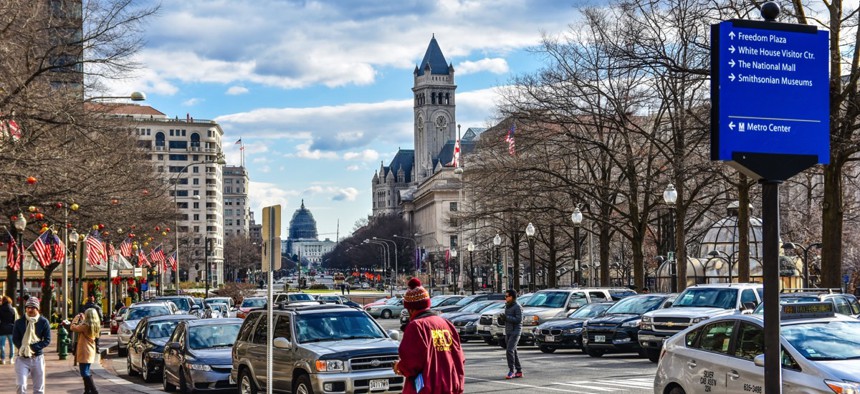How D.C.’s Workforce System Ditched Its ‘High Risk’ Federal Designation

Washington, D.C.
“Our turnaround has been focused on people,” said the director of the District of Columbia’s Department of Employment Services.
WASHINGTON — The U.S. Department of Labor removed the District of Columbia from its list of high-risk grantee governments, having issued that designation in 2012.
The news came shortly before the fifth in a series of first-ever D.C. Works Week events highlighting new programs and impactful employers and community stakeholders within the city’s overhauled workforce system.
Previously the District’s Department of Employment Services learned the 36-deliverable corrective action plan it drafted over three months was both approved and ahead of schedule—wins for an agency that has struggled on and off for the past 17 years.
“Our turnaround has been focused on people,” Odie Donald II, DOES director, told Route Fifty in a sit-down interview. “More so than this high-risk designation.”
Donald began as executive director of D.C.’s Workforce Investment Council in January 2016, before moving to his current role a year later. During that time, he went on a “listening campaign” consisting of 14 community events, where everyone from residents attempting to access workforce services to the presidents of Donohoe Hospitality Services and PEPCO could share the issues they were having with city officials.
One such resident was 23-year-old Deandre Johnson, a former marijuana dealer who entered the DOES Project Empowerment Program upon his release from prison and now works for DC Water. A $7,000 investment from the District government has changed his life.
Over two years, DOES has connected about 100,000 people with 300,000-plus services and seen $831 million reinvested into the local economy through its efforts, Donald said.
“Our workforce programs have come a long way over the past several years, and today, I am proud to celebrate our progress,” D.C. Mayor Muriel Bowser said in a statement on Friday, which was the District’s first Workforce Signing Day. “My administration is changing the way job training and apprenticeship programs in D.C. work, creating new entry points to employment in a wide array of industries, and enabling residents to earn while they learn.”
In establishing what the city’s new workforce system would look like, Bowser wanted Donald to ensure both those ready and willing to work and those facing barriers to employment could access services.
Donald had until April 1, 2016 to deliver a five-year strategic plan, which included input from a variety of other stakeholders like the departments of Human Services and Disability Services, the University of the District of Columbia and its community college and Office of the State Superintendent of Education.
In June 2016, the plan was fully approved, not conditionally like most states.
“That’s a very big deal for what would be considered the worst workforce system in the country delivering the strongest strategic plan,” Donald said.
Donald’s focus was on measurable performance in diverse service delivery across D.C’s entire “suite of products.” DOES has a $150 million budget for unemployment insurance, employment and training to skill people up, employment services for job seekers, workers compensation, and to manage and enforce labor laws.
The city also has a “first source” policy. Much of the District’s $14 billion budget goes toward construction projects, and any project with $1 of city money in it has the “first source” requirement to hire residents.
“[W]e’ve started to innovate and become an industry and sector leader when it comes to government operations, workforce implementation and really just service delivery as a whole,” Donald said.
D.C. Works Week emphasized that with the launch of the Infrastructure Academy to cover an industry previously overlooked by the city. Transportation, energy efficiency and information security skills trainings and job postings are now available in one place.
The District also unveiled Apprenticeship D.C., which introduces new apprenticeships in hospitality, IT, health care and infrastructure with the city already ahead of the curve on construction-related offerings.
“Our statewide apprenticeship initiative, the focus, is to one make sure we double the amount of apprentices by 2021,” Donald said. “And then from there increase the number of apprenticeship sponsors.”
Dave Nyczepir is a News Editor at Government Executive’s Route Fifty and is based in Washington, D.C.
NEXT STORY: Creative Workforce Programs Aim to Stave Off Economic Decline in Maine






